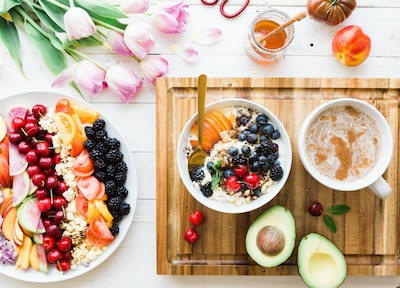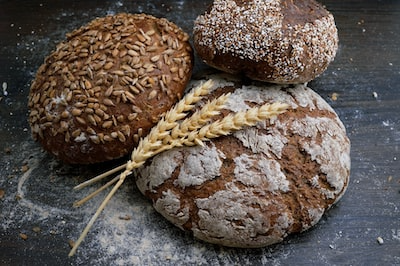How to Lose Weight and Keep It Off: Effective Tips
Embarking on a voyage to grasp how to shed pounds and sustain it can be both demanding and gratifying. As you navigate through this process, understanding the key components of successful weight loss is essential for long-term success. This guide will provide an in-depth exploration of approaches that have been demonstrated to be successful for not only slimming down but also sustaining a healthy lifestyle.
Mindful eating habits play a crucial role in achieving your goals as they help you identify emotional triggers and practice techniques for healthier food consumption. Additionally, setting realistic weight loss targets ensures you remain motivated throughout the journey by celebrating small victories.
 Moreover, making healthier food choices, such as incorporating lean protein sources and practicing portion control, contributes significantly to your overall progress. Cooking at home and staying hydrated are other vital factors influencing appetite regulation while learning to lose weight and keep it off.
Moreover, making healthier food choices, such as incorporating lean protein sources and practicing portion control, contributes significantly to your overall progress. Cooking at home and staying hydrated are other vital factors influencing appetite regulation while learning to lose weight and keep it off.
Lastly, regular physical activity tailored to individual preferences boosts metabolic rate while building muscle mass. A strong support network coupled with technological tools aids in tracking progress effectively, ensuring accountability during your transformational journey.
Table of Contents:
- Mindful Eating Habits
- Eliminating Distractions During Mealtime
- Recognizing Hunger Cues To Avoid Emotional Or Stress-Induced Eating
- Setting Realistic Goals
- Healthier Food Choices
- Cooking at Home
- Regular Physical Activity
- Support Networks and Accountability
- The Healthy Plate Method
- FAQs about How to Lose Weight and Keep it Off
- Conclusion
Mindful Eating Habits
Developing mindful eating habits is crucial for successful weight loss. This involves avoiding distractions during meals, eating slowly, savoring each bite’s taste and texture, and listening to hunger cues from your body. Practicing mindfulness can help prevent overeating and improve overall satisfaction with food.

Eliminating Distractions During Mealtime
Removing potential distractions like television or smartphones while enjoying a meal is essential to fully focus on eating. By being attentive to the food you’re consuming, it will be easier to recognize when your hunger has been satiated and prevent eating out for emotional or stress-related reasons. Check out these tips for mindful eating.
Recognizing Hunger Cues To Avoid Emotional Or Stress-Induced Eating
- Biological hunger: Pay attention to physical signs such as an empty stomach or low energy levels, indicating it’s time for nourishment.
- Satiety signals: Learn how long it takes for your body to feel full after starting a meal by practicing slow chewing techniques, which allow ample time between bites allowing the digestion process to begin before continuing consumption.
- Hunger vs. craving: Differentiate between true hunger pangs versus cravings triggered emotions (e.g., stress) so they don’t lead to unnecessary calorie intake; consult a registered dietitian if needed assistance managing emotional triggers leading poor dietary choices (Find a Registered Dietitian Nutritionist near you.)
- .
Setting Realistic Goals
Setting achievable goals helps maintain motivation throughout the weight loss journey. Start by aiming to lose 5-10% of your body weight initially and maintain that new weight for at least six months before attempting further reductions. This approach allows your metabolism time to adjust accordingly.

Creating short-term milestones for gradual progress
- Weekly targets: Set small, attainable goals such as cutting out soda or adding a daily walk. By breaking down the journey into smaller steps, these incremental changes can lead to significant long-term success.
- Achievable benchmarks: Rather than focusing on an idealized end goal, set realistic benchmarks like losing one clothing size or improving blood sugar levels. Celebrate these victories along the way.
Adjusting expectations in response to setbacks or plateaus
No weight loss journey is without its challenges; staying flexible and adapting when faced with obstacles is essential. If you hit a plateau, consider consulting with a registered dietitian or personal trainer who can guide how to tweak your eating habits and physical activity routine.
Maintaining a positive mindset during slow progress is crucial – remember that even minor improvements are steps toward better health. Keep track of non-scale victories like increased energy levels, improved sleep quality, or enhanced mood as additional indicators of successful weight loss.
Healthier Food Choices
Making healthier food choices plays a significant role in losing excess pounds. One effective strategy is to replace refined carbohydrates with whole-grain alternatives such as brown rice or quinoa; these complex carbs provide more fiber which aids digestion and keeps you feeling fuller longer. Eliminating high-sugar foods like candy and desserts helps cut calories and lowers your risk of developing diabetes.
Swapping White Breads/Pastas for Whole Grains
- Whole wheat bread: Opt for 100% wheat bread instead of white bread, as it contains more nutrients and fiber.
- Brown rice: Brown rice has a higher nutritional value than white rice due to its bran layer, which provides essential vitamins, minerals, and antioxidants.
- Oats: Oats are a great source of soluble fiber that can help regulate blood sugar levels and improve heart health. Choose steel-cut or old-fashioned oats over instant varieties for the best benefits.
Reducing Sugar Intake Through Smarter Snack Options
Consider incorporating healthier snack options into your daily routine to maintain weight loss success. Here are some suggestions:
- Fruits and vegetables: Fruits and vegetables are low in calories and nutrients, making them a great choice for a snack. Some examples include apples, bananas, carrots, celery, grapes, oranges, and strawberries.
- Yogurt: Yogurt is a good source of protein and calcium, and it can help you feel full. Some examples include plain Greek yogurt, flavored yogurt, and yogurt with fruit.
- Nuts and seeds: Nuts and seeds are a good source of protein, fiber, and healthy fats. Some examples include almonds, cashews, peanuts, pecans, pistachios, and walnuts.
- Hard-boiled eggs: Hard-boiled eggs are a good source of protein and healthy fats. They are also portable snacks you can take on the go.
- Popcorn: Popcorn is a low-calorie snack that is high in fiber. Ensure to air-pop your popcorn or use a light butter spray to avoid adding extra calories.
- Trail mix: Trail mix combines nuts, seeds, and dried fruit. It is a portable and nutritious snack that can help you stay satisfied between meals.
- Hummus and vegetables: Hummus is a good source of protein and fiber. It can be served with carrots, celery, and cucumbers.
- Cottage cheese: Cottage cheese is a good source of protein and calcium. It can be topped with fruit, nuts, or seeds for a more satisfying snack.
- Protein shakes: Protein shakes are a convenient way to get a quick and easy dose of protein. They can be made at home or purchased from a store.
- Losing weight and keeping it off can be challenging, but hard work and dedication can be possible. There are many different ways to lose weight, but the most important thing is to find a method that works for you and can stick to long-term. Some general tips for losing weight and keeping it off include:
- Eating a healthy diet that is low in calories and high in nutrients.
- Exercising regularly.
- Getting enough sleep.
- Managing stress.
- Finding a support system.
-
It is also important to remember that losing weight is not a linear process. There will be ups and downs along the way, but it is important to stay positive and keep working towards your goals. If you fall off track, don’t give up. Just get back on track and keep going.
You can lose weight and keep it off for good with hard work and dedication.
